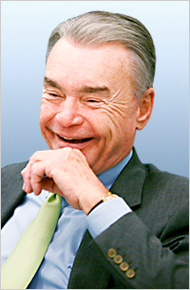(p. D1) SAN ANTONIO — Some of the world’s pre-eminent experts on bias discovered an unexpected form of it at their annual meeting.
Discrimination is always high on the agenda at the Society for Personality and Social Psychology’s conference, where psychologists discuss their research on racial prejudice, homophobia, sexism, stereotype threat and unconscious bias against minorities. But the most talked-about speech at this year’s meeting, which ended Jan. 30, involved a new “outgroup.”
It was identified by Jonathan Haidt, a social psychologist at the University of Virginia who studies the intuitive foundations of morality and ideology. He polled his audience at the San Antonio Convention Center, starting by asking how many considered themselves politically liberal. A sea of hands appeared, and Dr. Haidt estimated that liberals made up 80 percent of the 1,000 psychologists in the ballroom. When he asked for centrists and libertarians, he spotted fewer than three dozen hands. And then, when he asked for conservatives, he counted a grand total of three.
“This is a statistically impossible lack of diversity,” Dr. Haidt concluded, noting polls showing that 40 percent of Americans are conservative and 20 percent are liberal. In his speech and in an interview, Dr. Haidt argued that social psychologists are a “tribal-moral community” united by “sacred values” that hinder research and damage their credibility — and blind them to the hostile climate they’ve created for non-liberals.
. . .
(p. D3) The politics of the professoriate has been studied by the economists Christopher Cardiff and Daniel Klein and the sociologists Neil Gross and Solon Simmons. They’ve independently found that Democrats typically outnumber Republicans at elite universities by at least six to one among the general faculty, and by higher ratios in the humanities and social sciences. In a 2007 study of both elite and non-elite universities, Dr. Gross and Dr. Simmons reported that nearly 80 percent of psychology professors are Democrats, outnumbering Republicans by nearly 12 to 1.
For the full commentary, see:
JOHN TIERNEY. “Findings; Social Scientist Sees Bias Within.” The New York Times (Tues., February 8, 2011): D1 & D3.
(Note: ellipsis added.)
(Note: the online version of the article is dated February 7, 2011.)
To listen to Prof. Haidt’s speech and view his PowerPoints, follow this link:
Haidt, Jonathan. “The Bright Future of Post-Partisan Social Psychology.” Presented at the annual meeting of the Society for Personality and Social Psychology in San Antonio, TX on Jan. 27, 2011.
The Cardiff and Klein research mentioned in the commentary:
Cardiff, Christopher F., and Daniel B. Klein. “Faculty Partisan Affiliations in All Disciplines: A Voter Registration Study.” Critical Review 17, no. 3-4 (Dec. 2005): 237-55.






